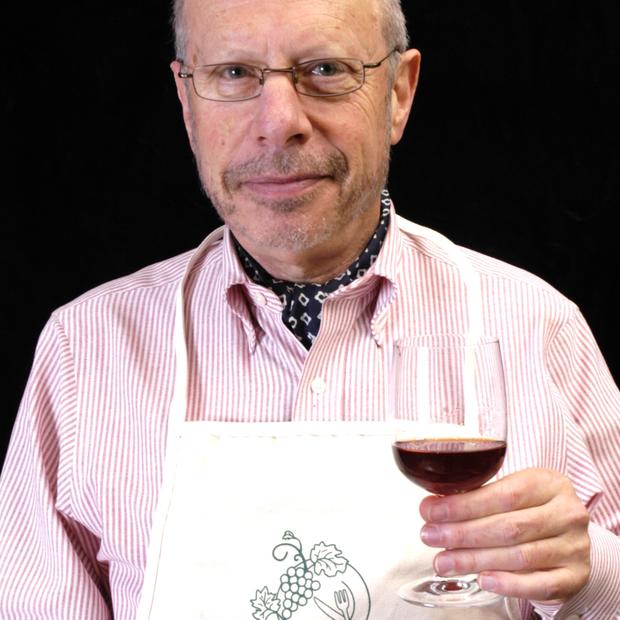Angelo Pellegrini, the sage of Seattle's culinary revolution in the 1960s, grew up in Tuscany, where he would gather (and sell as cooking fuel) roadside cow pies to earn a few coins. That's hardly the boyhood one expects for a revered professor of literature at the University of Washington, but it was not an unusual story.
In the first half of the 20th century, southern Europe was racked by unimaginable poverty. Millions fled toward land they hoped could feed them; those left behind boiled and ate whatever they could find. And when there's literally nothing to eat, one invents. Vegetables, maybe, if they'll grow. Game, perhaps, if it's available (squirrel and possum on the North American continent), otherwise milk from a scrawny cow, flour milled from chestnuts or bread baked without salt because salt is too expensive.
What's remarkable is that those dark days, whose details are vividly recalled, decades later, by survivors at the end of their lifespan, produced a culinary culture that is nothing short of glorious. Their stories, as recounted by Pamela Sheldon Johns in her new book, Cucina Povera: Tuscan Peasant Cooking "were sad, bitter and desperate." Almost every person she interviews says the same thing, "We had nothing to eat," yet their memories of the food they did have (and that enabled them to survive) were almost always pleasant.
This compilation, the food of hard times, the cooking of the poor, turns Cucina Povera into the most positive book I've reviewed in years. And the author is on her way to Seattle, where she will teach a number of classes next month.
To be fair to the long-established scholars, it's a landscape that's been plowed before, especially by Lynne Rossetto Kasper, another culinary writer (and public radio host) with Italian-American roots whose books have been honored by the James Beard Foundation and the International Association of Culinary Professionals. Kasper called this the cooking of ingenuity. "You take what the land gives and you make something of it," she wrote in The Italian Country Table (1999).
Bread baked without salt dries out within a day, to be revived with wine or stock or olive oil, giving way to ribollita (bread soup), panzanella (bread salad) and bruschetta (toasted bread with toppings). As winter subsides, tomatoes ripen and their flavor explodes. Pigs become prosciutto (not to mention guanciale, porchetta, coppa, culatello, pancetta, mortadella, lardo, lombata, speck, salami, and so on), milk becomes cheese (from fresh ricotta to aged Parmegiano). Fruit can be preserved with sweet grape must or honey if there's no refined sugar.
Cucina Povera is a collection of some five dozen recipes that should make the reader appreciate the ease of modern cooking as well as the depth of flavor that comes from unprocessed food. Johns is an American food writer who now lives on a farm in Tuscany, Poggio Etrusco, outside Montepulciano, where she teaches culinary workshops. Almost every recipe is accompanied by a deftly drawn profile of an Italian friend who recalls the days of true poverty. The ingredients are accessible, the methods are straightforward, the accumulation of the recipes is one of joy and plenty.
There's one for acquacotta, for example, that's a sort of stone soup: nothing but coarsely chopped vegetables for flavor, with a poached egg and a crust of crust of country bread. Dandelion greens or arugula leaves provide a savory filling for a six-egg frittata. A recipe for ricotta cheesecake needs only half a dozen ingredients (eggs, milk, sugar, lemons, flour, baking powder), can be assembled in 15 minutes, baked for 35, and enjoyed for dessert.
I admit to a couple of instances of confusion. "Guanciale" refers specifically to the jowls of a pig, not cows. Sure, bovines have jowls, and restaurants (even in Seattle) offer dishes featuring beef cheeks. But it you're going to call something guanciale, it better be pork. Perhaps it's just a Tuscan thing.
Second, the classic white sauce of European cuisine — butter or oil, flour, milk or cream — is Béchamel in French, Besciamella in Italian, not "Balsamella." It's called Béchamel because its "inventor" was a specific historic personage, a 17th Century nobleman named Louis de Béchameil, the Marquis of Nointel. A velouté with a lot of milk or cream added. Again, perhaps it sounds like "Balsamella" in Tuscan dialect. Pseudo-Italian TV chef Emeril Lagasse calls it Balsamella, too, but that's probably what they call it on the Jersey Shore.
No discussion of this book would be complete without an enthusiastic endorsement of the photographs, by Andrea Wyner: portraits that evoke the hard lives the Tuscan elders have lived, as well as refreshing reinventions of Tuscany's landscapes.
If you go: Johns is on a U.S. tour this winter to promote her book and to teach private classes. She'll be in Western Washington for ten days in early March, and will teach a couple of classes at Dianne LaVonne's Market Kitchen, 1101 Post Alley in Seattle, on March 7 (time to be announced) and again at noon on March 9. Other classes or events are scheduled for Edmonds, Port Townsend, Bellingham, and private venues in Seattle, as well as in Portland and other Oregon cities in late February. For details, check the Food Artisans website. Johns will have a book reading at 7 p.m. on March 8 at Third Place Books, 17171 Bothell Way NE in Lake Forest Park. Cucina Povera: Tuscan Peasant Cooking, by Pamela Sheldon Johns, Andrews McMeel Publishing, 186 pages, $21.99.



